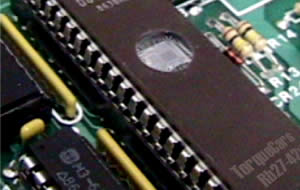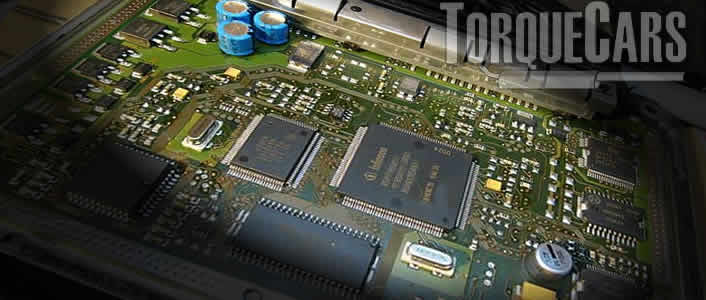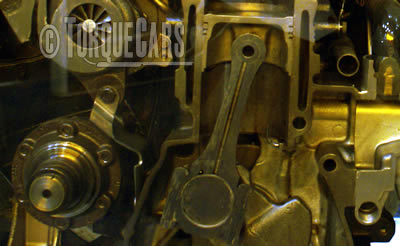Misfiring and flat spots following tuning.
"Thanks for reading our guide to diagnosing faults after tuning"
We get many posts emails and questions about misfires and flat spots after a car is modified or tuned. So we are providing this article as a guide to help you diagnose the issue.
Standard engines can cope with pretty deplorable conditions, bad fuel, weak spark, degraded engine sensors etc...
In fact, manufacturers build in a wide area of fault tolerance to maintain reliability.
 When a car is tuned, you reduce this area of fault tolerance.
When a car is tuned, you reduce this area of fault tolerance.
A precision-built F1 engine only has to last around 7 races or 1326 miles, so the tolerances are very tight and the engine map is absolutely spot on to virtually lab conditions.
Things are so tightly engineered the F1 engines have to be prewarmed to allow the metal expansion to take place and free up the seized engine.
If the engine had to last longer they would no doubt have to sacrifice a little performance and pull back the mapping.
On a road car you need some variance for faults and issues, and an engine map should have a little flexibility to cope with the variables of the real world.
So after a tune/remap you get a flat spot or misfire and conclude the problem must be the tune/remap or modification.
So go back to the tuner, demand a refund and go back to standard assuming the mod or map was the problem.
In reality the fault was always there, the tune/remap or modification merely highlighted it. It may even manifest later on as a full on breakdown, but at least you are now aware there is a problem.
There are sometimes issues with off the shelf remaps, they may not fully take into account your cars fuel intake or how the air flows into your engine, causing your car to run rich or lean, when on most other cars in better condition it would work fine.
The lesson here is to use a mapper or tuner that can tune YOUR car, not copy an off the shelf map into your car. The midway is to get an off the shelf map, tweak out the flat spots and you have a more powerful engine.

But let's assume the map or modification is fine, and there is an issue with your car, how do you track it down?
To establish what the cause is one must isolate the problem.
Misfires can be traced to the following 3 areas: -
- Electrical
- Mechanical
- Fuelling
We need to start with basics, not jumping in and being haphazard. Develop a logical check, test and trace routine.
Does the misfire happen or get worse
- when the engine is hot or cold
- at specific points of the rev band
- when under load or light load
- when different fuel types are used, even different octanes brands can matter
- randomly with no pattern
If possible, get vehicle on a diagnostic machine to highlight any obvious faults and issues. An OBD fault code reader is a good starting point.
Start at the beginning:
Electrical fault tracing
Check : -
- Was all OK before the application of tuning? Always ensure your car is %100 before you start doing any tuning.
- Check low tension wiring
- Check coils, use a multimeter.
- Check distributor cap. Cracks? Corroded pick up from the arc. Clean and test.
- Check rotor arm (if applicable) cracked or corroded. Clean, check, reface and polish the spark surfaces.
- Check HT leads. Clean and check for damage, loose connectors. Test with multimeter. Replace as necessary.
- Spark plugs. Clean and check. If high mileage, replace. On highly modified engines a different grade of plug will be necessary. Check and change.
Mechanical fault tracing

- Check valve clearances and adjust if necessary.
- Check compression, look for cross cylinder bleed, indicating a blown head gasket between cylinders.
- Carry out cylinder leakage test to determine if there are leaking valves, or piston rings.
- Check cooling system, pressure test if possible. Check for water in oil.
Note that if you have increased the compression ratio, or added a supercharger, turbo, or twin charged an engine you may find the increased cylinder pressure will cause a deformed spark, flame front, or suppress the spark sufficiently to cause misfires.
You may need to fit high output coils with alternative plugs to cope.
Fuelling issues and fault tracing
Poor fuel and the incorrect grade of fuel will cause misfires. Another common issue is fuel starvation caused by a lack of injector or fuel pump capacity. See if the car is running rich or lean at the point of the misfire or fault.
Bear in mind that fuel delivery may just not match the air delivery, so it could even be down to a restrictive air intake. If you remove the air filter temporarily you'll see if the flat spots or misfires disappear. If they do upgrade your air intake and filter.
Where free flowing performance intakes have been added you may also start to run lean, again causing a flat spot. Swap in the OEM filter and housing and see if this improves matters, if it does then look at uprating the fuel injectors/pumps.
Also check
- Ignition timing to suit the fuel being used.
- Fuel delivery. Is the delivery pump working properly, at full pressure.
- Check, clean or change fuel filters
- Check fuel lines, have you disturbed them and created any damage or kinks. Are they old and corroded? Microscopic holes can allow air to be drawn into the delivery system. Look for damp looking corrosion along the pipework. Change as necessary.
- Check injector wiring.
- Check injector pipework for damage or leaks.
- Have injectors tested, overhauled or replaced.
- Diesels, check glow plugs for security and sealing.
- Carbon build up in the intake, which is common on direct injection can impair airflow.
Run some good quality fuel cleaner through the engine, and see if this improves matters.
Try some higher octane/cetane fuel, it may increase your car's fault tolerance, and we have to note that some tuned cars will only run on the higher grade fuels.
Get the vehicle on a rolling road and get it tuned/remapped properly. Adding performance parts to an engine will only take you so far, the car needs a map so it knows how to time the ignition of your new quantity of fuel and air.
Most engines will trim a little and they do this to cope with higher or lower octane/cetane fuel and changes in the weather temperatures.
Many thanks to our forum members who contributed to this article, particularly Fabia17.
Please Check out my YouTube channel, we're regularly adding new content...
PLEASE HELP: I NEED YOUR DONATIONS TO COVER THE COSTS OF RUNNING THIS SITE AND KEEP IT RUNNING. I do not charge you to access this website and it saves most TorqueCars readers $100's each year - but we are NON PROFIT and not even covering our costs. To keep us running PLEASE Donate here
If you liked this page please share it with your friends, drop a link to it in your favourite forum or use the bookmarking options to save it to your social media profile.
Feedback - What do You Think?
Please use our forums if you wish to ask a tuning question, and please note we do not sell parts or services, we are just an online magazine.
Help us improve, leave a suggestion or tip
Please watch this video and subscribe to my YouTube channel.

 Click to accept YouTube Cookies & Play.
Click to accept YouTube Cookies & Play.